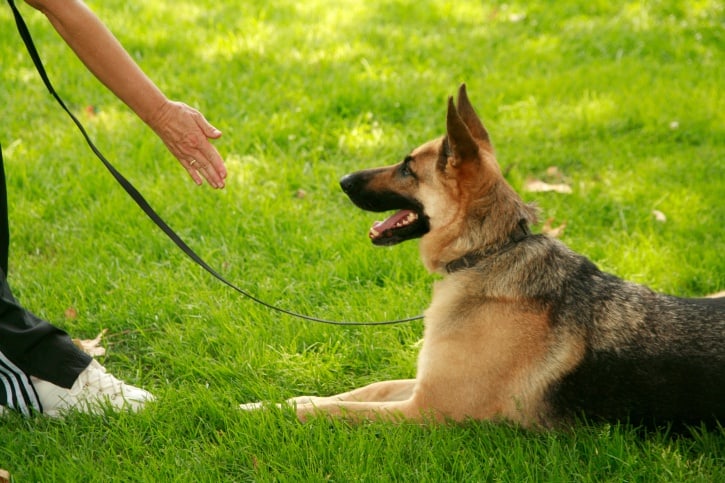“This post contains affiliate links, and I will be compensated if you make a purchase after clicking on my links.”

“I want to teach my dog obedience commands but I don’t know where to start. Any suggestions?” – Gregg V.
Obedience training is a goal for most dog owners. There are a variety of ways to do this: one-on-one training with a trainer, group obedience class, board and train program, or training your dog yourself.
Whichever option you choose is a personal decision. However I would suggest you contact a qualified professional if your dog is displaying any signs of aggression. If you want to teach general obedience to your puppy or non-aggressive adult dog, here’s a simple formula on how to do it:
- Teach your dog what command you want.
- Give the command a name.
- Praise your dog when they get it right, while making it impossible for them to get it wrong.
- Once the dog consistently and unequivocally demonstrates a full understanding, then reinforce each command by guiding them into position for noncompliance.
The initial step is to teach your dog through leash guidance or a food lure, what the particular command is that you are looking for. Once they are completing it with great fluency and ease, you want to add the verbal command.
The next component is to precede any action on your part (leash guidance or food luring), with a verbal command. This teaches your dog the meaning of the verbal command by making an association of that word with the proceeding action. The key is that your dog unequivocally understand the verbal command word, NOT simply responding to your physical gestures. That is a common mistake made by many owners. Ample praise and reinforcement (food, pet/praise or a toy reward) are essential. This is how your dog will know they performed the correct command and these are the motivators that will entice your dog to want to participate and listen.
The third step is to make sure you set both you and your dog up for success. You do this by building on small achievements and not rushing the training process. Use the 80/20 principle as your rule of thumb. If a dog perpetually makes “mistakes”, that sets the wrong precedent and will inevitably teach your dog to “break command” before you want them to or not listen at all (i.e. learning to ignore when you say “Come”).
The last step is to begin strategically building upon the Three D’s of Dog Training: Distance, Duration and Distractions. This stage is where you start developing reliability and improvements to your dog’s “Stay”. When your dog does prematurely break command (it’s inevitable they will), you must calmly and consistently (every time), guide your dog back into command. A dog that feels they only have to listen when they want to or not “stay” in command, will do what they want. A dog that finds training fun and learns that commands are non-negotiable, will dependably listen.
This may seem like an over simplistic approach on how to teach your dog, but it’s not. It’s the fundamentals consistently implemented and incrementally progressed that works. So when in doubt, go back to basics and slowly progress every day.
S.R. Dog Training provides in-home dog training in Connecticut, Westchester NY and Putnam NY. Find out about dog trainer Steve Reid at www.srdogtraining.com and “Like” us at: www.Facebook.com/SRDogTraining.


















